-
 Bitcoin
Bitcoin $118000
-2.69% -
 Ethereum
Ethereum $4617
-0.94% -
 XRP
XRP $3.100
-4.95% -
 Tether USDt
Tether USDt $1.000
0.02% -
 BNB
BNB $847.9
0.68% -
 Solana
Solana $195.4
-1.22% -
 USDC
USDC $0.9997
-0.01% -
 TRON
TRON $0.3628
1.01% -
 Dogecoin
Dogecoin $0.2261
-6.42% -
 Cardano
Cardano $0.9229
5.88% -
 Chainlink
Chainlink $22.81
-2.94% -
 Hyperliquid
Hyperliquid $44.85
-1.20% -
 Sui
Sui $3.822
-3.14% -
 Stellar
Stellar $0.4239
-5.48% -
 Bitcoin Cash
Bitcoin Cash $591.3
-4.70% -
 Ethena USDe
Ethena USDe $1.001
-0.02% -
 Hedera
Hedera $0.2523
-3.94% -
 Avalanche
Avalanche $23.94
-4.27% -
 Litecoin
Litecoin $122.9
-5.68% -
 Toncoin
Toncoin $3.421
-1.11% -
 UNUS SED LEO
UNUS SED LEO $9.264
0.24% -
 Shiba Inu
Shiba Inu $0.00001303
-5.26% -
 Uniswap
Uniswap $11.01
-7.86% -
 Polkadot
Polkadot $4.038
-4.21% -
 OKB
OKB $99.10
5.46% -
 Dai
Dai $0.9998
0.00% -
 Bitget Token
Bitget Token $4.600
-2.32% -
 Cronos
Cronos $0.1534
-7.90% -
 Ethena
Ethena $0.7414
-4.15% -
 Aave
Aave $315.3
-2.45%
How to check the mempool status?
The mempool holds unconfirmed transactions in blockchain networks, and its size helps gauge congestion, confirmation times, and optimal fees for timely processing.
Aug 13, 2025 at 11:35 am
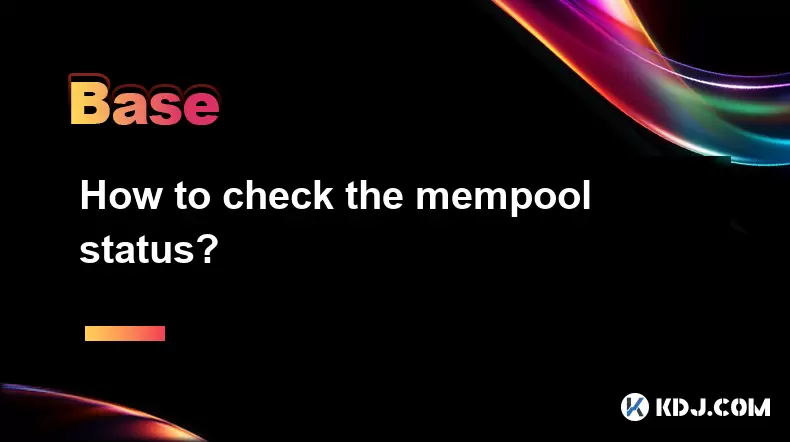
Understanding the Mempool in Cryptocurrency Networks
The mempool, short for memory pool, is a crucial component of blockchain networks such as Bitcoin and Ethereum. It acts as a temporary holding area for unconfirmed transactions waiting to be included in a block. When users broadcast transactions to the network, these transactions are first validated by nodes and then stored in the mempool until miners or validators pick them up. The status of the mempool can provide insights into network congestion, transaction confirmation times, and fee rates. Monitoring the mempool helps users determine optimal transaction fees to ensure timely processing. A congested mempool often leads to longer confirmation delays and higher fees due to competition among users.
Accessing Mempool Data via Blockchain Explorers
One of the most user-friendly ways to check the mempool status is through blockchain explorers. These platforms offer real-time data on pending transactions, current fee estimates, and block confirmation times. For Bitcoin, popular explorers include mempool.space, Blockstream.info, and Blockchain.com. For Ethereum, Etherscan.io and EthGasStation.info provide comprehensive mempool analytics. To use these tools:
- Navigate to the website of your preferred blockchain explorer.
- Look for sections labeled "Mempool", "Pending Transactions", or "Gas Tracker".
- Review the number of unconfirmed transactions displayed.
- Examine the fee distribution chart, which shows how many transactions are grouped by fee rate (in sat/vB for Bitcoin or Gwei for Ethereum).
- Check the estimated confirmation time based on current network load.
These interfaces often feature visual graphs that depict mempool size trends over time, helping users anticipate delays. Some explorers also allow filtering transactions by fee rate, enabling users to see what fee level is currently being confirmed.
Using Command-Line Tools for Advanced Mempool Analysis
For users running a full node, direct access to mempool data is possible via command-line interfaces. In Bitcoin Core, the getmempoolinfo RPC command returns key metrics such as the total number of unconfirmed transactions, total mempool size in bytes, and the fee rate of the lowest-paying transaction. To execute this:
- Ensure your Bitcoin Core node is fully synced.
- Open the command-line interface or use
bitcoin-cli. - Run the command:
bitcoin-cli getmempoolinfo. - The output includes fields like
size,bytes,usage, andtotal_fee.
Additionally, the getrawmempool command lists all transaction IDs currently in the mempool. Adding the true argument (getrawmempool true) returns detailed information per transaction, including fee, size, and ancestor count. This level of access is invaluable for developers and advanced users who need granular data for analysis or application development.
Monitoring Mempool via APIs and Developer Tools
Developers and automated systems can retrieve mempool status programmatically using public APIs. Services like Mempool API (mempool.space/api), Blockstream API, and Etherscan API offer endpoints for real-time mempool data. For example, to fetch Bitcoin’s current mempool statistics:
- Send an HTTP GET request to
https://mempool.space/api/v1/fees/recommended. - The response includes priority fee levels (high, medium, low) in sat/vB.
- Use
https://mempool.space/api/mempoolto get aggregate data like total transaction count and size.
For Ethereum, the Etherscan API provides endpoints such as https://api.etherscan.io/api?module=gastracker&action=gasoracle, which returns current gas prices and estimated confirmation times. Integrating these APIs into applications allows dynamic fee calculation and real-time user notifications. Always review rate limits and authentication requirements when using public APIs.
Interpreting Mempool Metrics for Transaction Optimization
Understanding mempool metrics enables users to make informed decisions about transaction fees. A high number of pending transactions indicates congestion, meaning lower-fee transactions may remain unconfirmed for hours or even days. The fee distribution histogram shows clusters of transactions grouped by fee rate. If a large number of transactions are queued at 50 sat/vB, setting a fee below that may result in delays. Conversely, during low congestion, even fees as low as 1–2 sat/vB might suffice.
For Ethereum, the base fee and priority fee components must be considered. The base fee is determined by network demand and adjusts per block, while the priority fee (or tip) incentivizes miners. During mempool spikes, increasing the priority fee ensures faster inclusion. Wallets like MetaMask display suggested fees based on current mempool conditions, but users can manually adjust these values for cost or speed optimization.
Real-Time Alerts and Mempool Monitoring Services
Several platforms offer real-time alerts and dashboards for continuous mempool monitoring. Mempool.space provides a live-updating dashboard with WebSocket support, enabling instant notifications when new blocks are mined or when mempool size changes significantly. Users can also subscribe to fee spike alerts via email or Telegram bots linked to blockchain analytics services. These tools are especially useful for traders, exchanges, and high-frequency transaction senders who need to react quickly to network changes.
Some advanced monitoring setups use custom scripts that poll API endpoints at regular intervals and trigger actions when predefined thresholds are met—such as automatically increasing fees for unconfirmed transactions. These systems rely on consistent data feeds and reliable API uptime to function effectively.
Frequently Asked Questions
What does a large mempool size indicate?
A large mempool size typically indicates high network demand, where more transactions are waiting to be confirmed than can fit in the next few blocks. This often leads to increased transaction fees as users compete for limited block space.
Can transactions get removed from the mempool?
Yes, transactions can be removed if they are confirmed, expired (if they include a relative locktime or nLockTime and aren’t confirmed in time), or evicted due to node memory limits. Some nodes may also drop low-fee transactions during congestion.
Why do some transactions stay in the mempool for a long time?
Transactions with low fees may remain in the mempool for extended periods, especially during congestion. Miners prioritize higher-fee transactions, so those with insufficient fees are often delayed until network activity decreases.
Is the mempool the same across all nodes?
No, the mempool is not identical on all nodes. Each node maintains its own mempool based on the transactions it has received and validated. However, well-connected nodes tend to have similar mempool contents due to rapid transaction propagation.
Disclaimer:info@kdj.com
The information provided is not trading advice. kdj.com does not assume any responsibility for any investments made based on the information provided in this article. Cryptocurrencies are highly volatile and it is highly recommended that you invest with caution after thorough research!
If you believe that the content used on this website infringes your copyright, please contact us immediately (info@kdj.com) and we will delete it promptly.
- Kazakhstan's Crypto Leap: Bitcoin ETF and Central Asia's Digital Finance Future
- 2025-08-13 12:45:19
- BlockDAG Presale Blazes Past $371M: Fundraising Frenzy Fuels Crypto Sensation
- 2025-08-13 13:05:21
- Meme Coins: Chasing the 2025 Surge – Which Will Moonshot?
- 2025-08-13 10:25:23
- Bitcoin's Wild Ride: Rally, Pullback, and What's Next
- 2025-08-13 10:25:23
- Bitcoin, Bitmax, and Institutional Demand: A New Era of Crypto Investment
- 2025-08-13 10:45:12
- Solana, ROAM, and Airdrops: What's the Buzz in 2025?
- 2025-08-13 11:35:13
Related knowledge
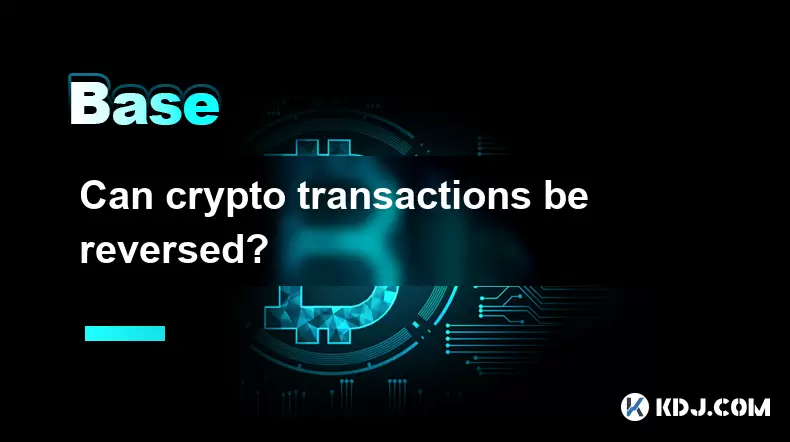
Can crypto transactions be reversed?
Aug 10,2025 at 01:35am
Understanding the Immutability of Blockchain TransactionsCryptocurrency transactions are built on blockchain technology, which is designed to be immut...
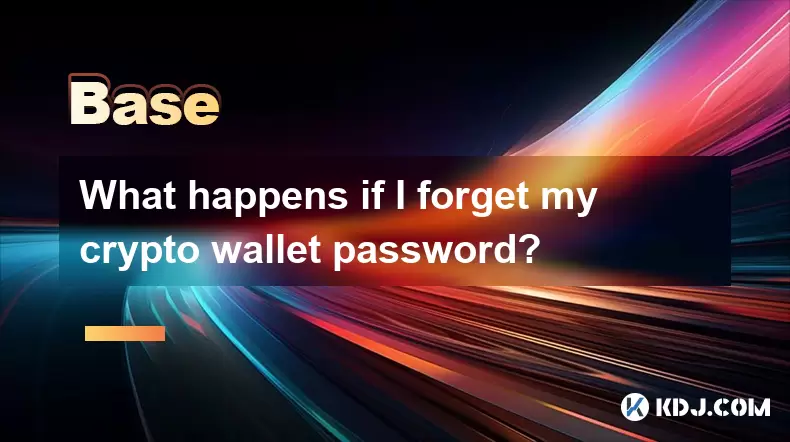
What happens if I forget my crypto wallet password?
Aug 09,2025 at 08:50am
Understanding the Role of a Crypto Wallet PasswordA crypto wallet password serves as a critical security layer that protects access to your digital as...
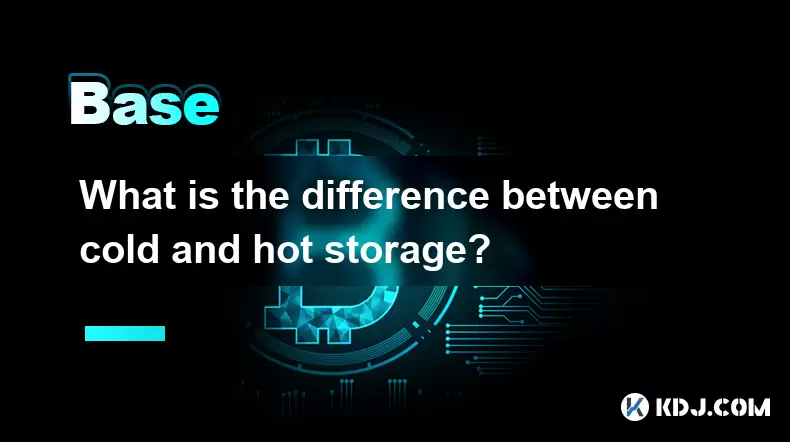
What is the difference between cold and hot storage?
Aug 12,2025 at 01:01am
Understanding Cold Storage in CryptocurrencyCold storage refers to offline methods of storing cryptocurrency private keys, ensuring they are not expos...
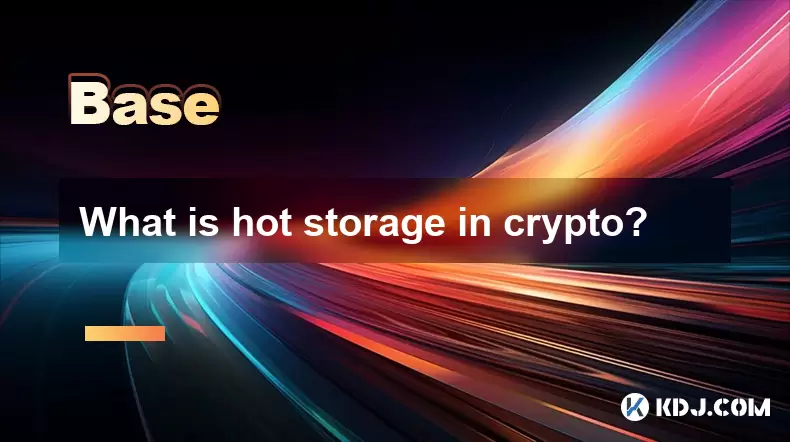
What is hot storage in crypto?
Aug 11,2025 at 07:08am
Understanding Hot Storage in CryptocurrencyHot storage refers to cryptocurrency wallets that are connected to the internet. Unlike cold storage soluti...

What is cold storage in crypto?
Aug 13,2025 at 11:35am
Understanding Cold Storage in CryptocurrencyCold storage in cryptocurrency refers to a method of storing digital assets offline, away from internet-co...

What is the best crypto portfolio tracker?
Aug 10,2025 at 05:08am
Understanding the Role of a Crypto Portfolio TrackerA crypto portfolio tracker is a digital tool designed to help investors monitor the performance of...

Can crypto transactions be reversed?
Aug 10,2025 at 01:35am
Understanding the Immutability of Blockchain TransactionsCryptocurrency transactions are built on blockchain technology, which is designed to be immut...

What happens if I forget my crypto wallet password?
Aug 09,2025 at 08:50am
Understanding the Role of a Crypto Wallet PasswordA crypto wallet password serves as a critical security layer that protects access to your digital as...

What is the difference between cold and hot storage?
Aug 12,2025 at 01:01am
Understanding Cold Storage in CryptocurrencyCold storage refers to offline methods of storing cryptocurrency private keys, ensuring they are not expos...

What is hot storage in crypto?
Aug 11,2025 at 07:08am
Understanding Hot Storage in CryptocurrencyHot storage refers to cryptocurrency wallets that are connected to the internet. Unlike cold storage soluti...

What is cold storage in crypto?
Aug 13,2025 at 11:35am
Understanding Cold Storage in CryptocurrencyCold storage in cryptocurrency refers to a method of storing digital assets offline, away from internet-co...

What is the best crypto portfolio tracker?
Aug 10,2025 at 05:08am
Understanding the Role of a Crypto Portfolio TrackerA crypto portfolio tracker is a digital tool designed to help investors monitor the performance of...
See all articles

























































































